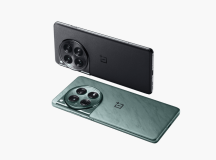Why “smart glasses” or augmented reality (AR) devices should be considered basic tools for workers…and a great advantage to your business.
1. A new generation of high-capacity smart glasses has hit the market.
The introduction of the Glass Enterprise Edition marked the beginning of a new era in the development of smart eyewear. Furthermore, the second generation of smart glasses features a longer battery life and a higher processing power than the first-generation model.
Similar gadgets with other form factors, such as the Realwear HMT-1 and the new Vuzix M400, show handsfree displays. These will start to live up to the industry demands and withstand the rigors of the factory floor in the near future.
In its first year on the market, Iristick challenges the notion that smart glasses are a hardware solution in their own right. Iristick’s smart glasses connect to a smartphone, allowing for greater computing power as well as longer battery life on the go.
2. Proven software applications for smart glasses are growing and becoming more user-friendly.
In order to be effective, use smart glasses in conjunction with certain software. As an example, Google Glass carefully selects only 12 partners who have proven industrial uses in the enterprise setting to collaborate with.
There is no common factor among the end-users that are being served. Smart glasses have the potential to be used in a wide range of industrial and other applications.
Is it your goal to digitize your job instructions and checklists? Would you want to delve further into the world of telemedicine? All of this and much more are now possible.
3. A large number of desk-less workers require information to be displayed in their line of vision.
What are the advantages of smart glasses over tablets or smartphones for a company?
Proceedix CEO Peter Verstraeten is convinced that smart glasses should only be considered if the work needs to be done without the use of your hands. One example might be quality control checks during field services. In addition, another use is end-of-line quality control checks on heavy machinery. Checklists for clearing lines are another use.
In all of these applications, it’s possible to project your workflow instructions onto the head-mounted display using the appropriate software.
4. Remote help requires the use of the viewpoint of the person at work.
Smart glasses are the best tool for remote support, second only to the ability to operate hands-free.
There have been great advances in the last couple of years in video-streaming software. Because of these advances, they can now be used in places with limited or no internet access. This is a huge advantage for businesses waiting on better internet service to upgrade their own service.
The program is ready, but the hardware is often the stumbling block. For example, picture an engineer in the field who is working and holding a smartphone to transmit images to a distant expert. He requires more than one pair of hands to do all of that successfully.
Again, smart glasses are changing remote help. They allow operators to receive real-time assistance while also performing their own tasks. Smart glasses allow the expert to view what the technician sees. In addition, the technical specialists who are located far away can then provide real-time input.
5. Saving time and money takes care of the return on investment.
You’ll save time and money as your firm adopts smart eyewear.
Yes, a nice pair of smart glasses will cost between $1500 and $2000 USD. In the long run, this cost will deliver a significant return on investment. Expensive and time-consuming travels for your technical professionals will be a thing of the past. Similarly, replacement fees for broken tablets are done away with as well.
Work done without the use of hands-on on the factory floor boosts the efficiency of your experienced operators. In addition, it minimizes the amount of time new hires spend learning their jobs. These are benefits that no company should ignore.
It was predicted that smart glasses would save the field service business $1 billion per year back in 2013. That was a bold call. There have been many technological breakthroughs in recent times. We can expect the full potential of smart glasses to show up in the near future. Smart glasses will change the future of business altogether.
















